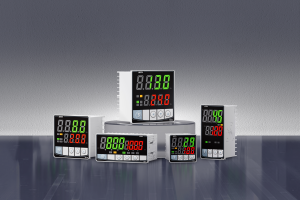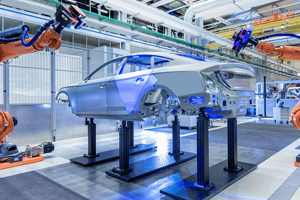How to Use a PID Temperature Controller Step-by-Step in This Comprehensive Guide
Discover how to operate a PID temperature controller using this comprehensive guide. Understand its components, setup process, configuration tuning options and applications for precise temperature regulation.
1.Introduction
A PID temperature controller is an invaluable asset in industrial and laboratory settings. PID stands for Proportional-Integral-Derivative; these three control parameters serve to maintain desired temperatures with precision and efficiency - qualities which make PID temperature controllers an invaluable addition in processes where stable temperature control is essential.
2.Components of a PID Temperature Controller
thermocouples tend to have wider temperature range and faster response time while RTDs have greater precision and reliability.
3.Controller Unit
The controller unit serves as the brain of any PID system. It receives temperature data from sensors and compares it with desired setpoint, before making necessary adjustments using PID algorithm to minimize error. Many modern PID controllers also come equipped with digital displays and user-friendly interfaces, making configuration and monitoring much simpler.
4.Actuator (Heater or Cooler)
An actuator is the device responsible for altering process temperature; this could include any device capable of increasing or decreasing it such as heaters and coolers, among others. A controller communicates signals to these actuators so they can alter their output accordingly to control process temperatures; which type is selected depends on both application specific factors as well as desired temperature range requirements.
Power Supply
mes Reliability in powering PID temperature controllers is vital. A stable supply should provide all three parts with sufficient voltage and current needed for effective functioning, providing all three with power that helps them function as intended.
Wiring and Setup Installing a PID temperature controller involves connecting its components in an orderly fashion. Here are the steps involved:
1. Locate and Identify Wiring Points and Relays on Controller: Before beginning, locate all wiring points and relays on the controller and referring to its manual for detailed diagrams on how they connect together.
2. Attach a Sensor: Secure and Adjust
3. Connect the Actuator to the Controller: Attaching an actuator such as a heater or cooler to its controller can involve connecting to either a relay or solid state relay (SSR), depending on how its designed.
4. Button Up the System: Connecting Power Supply: When attaching the power source to the controller and verifying all connections are secure, switch on power for system verification purposes before powering it back on and looking out for any signs of errors or malfunction.
5.Configuring the PID Controller
After wiring has been completed, the next step in configuring a PID controller involves setting your target temperature and making necessary changes to PID parameters.
1.
Establish the Target Temperature: To set the Target Temperature, utilize the controller's interface to set your desired setpoint temperature - this is what the controller will maintain over time.
2. Adjusting PID Parameters: PID parameters (Proportional, Integral and Derivative) need to be set appropriately to attain optimal control. These settings determine how the controller reacts when an error arises - typically with default settings but sometimes fine-tuning may be necessary depending on specific applications.
3. Exploit Auto-Tuning Features: Some PID controllers include auto-tuning features to automate parameter adjustment to suit system responses more seamlessly and enhance control accuracy. Taking Advantage Of Automatic Tuning Features
6.Tuning Your PID Controller
Tuning a PID controller involves making changes to its PID parameters until they meet desired control performance specifications. Tuning options available to you for tuning include two methods for fine-tuning this kind of system:
1.
Manual Tuning: Manual tuning involves manually adjusting PID parameters and monitoring how your system responds. Adjust Kp until your system responds appropriately before making further changes such as altering Ki to eliminate steady state errors, then Kd to reduce overshoot while improving stability.
2.
Auto-Tuning: Today's PID controllers include auto-tuning features to automatically tune PID parameters - making life simpler for systems with complex requirements and saving valuable time in tuning them manually. This method offers convenience as it automatically optimizes PID parameters without taking time away from you as an engineer to tune manually each parameter separately.
Tips to Achieve Maximum Performance: * Make small modifications at first and gradually build upon them until reaching optimal performance is realized.
* Monitor how each change impacts the system after making adjustments.
* Use the tools and features built into the controller for assistance when tuning.
PID temperature controllers have become ubiquitous due to their accuracy and dependability, being employed across many applications in diverse settings. Here are a few uses:
* Industrial Applications: PID controllers are widely utilized for use in furnaces, chemical processes and manufacturing equipment to maintain precise temperatures at precise settings.
* Laboratory Applications: PID controllers can be found in incubators, test chambers and other laboratory devices where accurate temperature regulation is essential.
* Everyday Applications: PID controllers can also be found in everyday household appliances like ovens, home brewing systems and HVAC systems, providing consistent temperature regulation.
7.Troubleshooting and Maintenance
Regular PID temperature controller maintenance and troubleshooting is crucial to its effective operation, here are some issues and possible solutions:
* Error with Sensor Connections or Replacement Need: Inspect sensor connections carefully and replace it if required.
* Controller Errors: Before operating any controller device, be sure it has the appropriate settings configured correctly and that no errors occur with its configuration.
* Actuator Issues: Conduct a visual inspection on the actuator for any signs of wear or damage and replace as necessary.
Tips for Regular Maintenance: * To maintain accurate temperature readings, regularly calibrate the sensor.
* Maintain the controller and actuator to prevent dust accumulation.
* Conduct periodic inspections on wiring and connections.
8.Conclusion
Effective use of a PID temperature controller requires understanding its components, wiring and installation procedures, configuring parameters accordingly and tuning your system for maximum performance. PID controllers have become integral tools in many different industries due to their precise yet reliable temperature regulation capabilities; following the steps outlined here you can effectively employ one for use within your process and maintain desired temperatures with confidence.
- Understanding PID Control Systems: Components, Working, and Applications
- Understanding PID Control: Proportional-Integral-Derivative Explained























